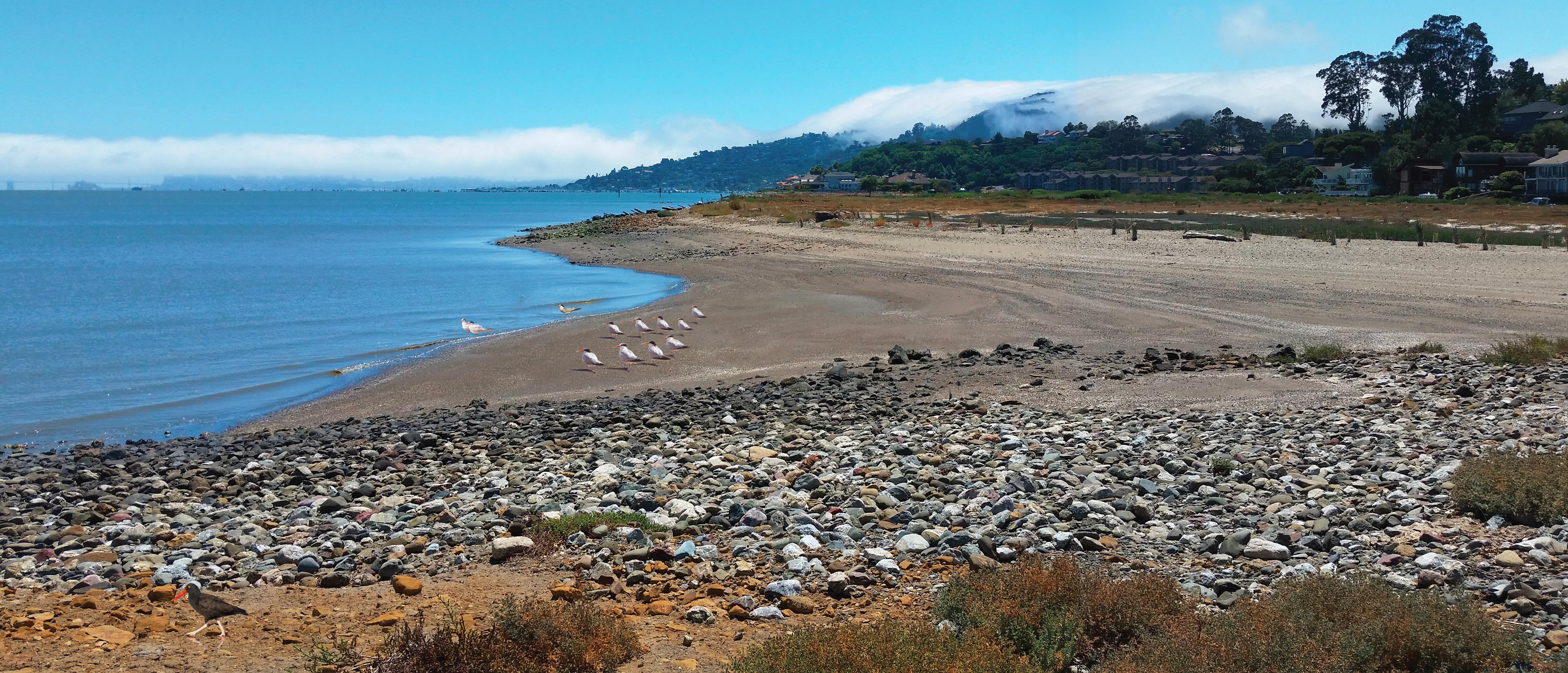A Beach by Any Other Name
There has been a lot of talk lately in the Bay Area’s restoration community about including gravel beaches in restoration projects. Much of that trend came out of the Resilient By Design Challenge a few years ago (which connected international designers with Bay Area communities to create innovative plans protecting against sea level rise and storms), but the idea goes back way before that. A handful of local beach restoration projects have been completed (Aramburu Island in Marin County, for example), and there are some constructed beaches in Foster City and a few other places.
But interestingly enough, naturally occurring gravel beaches used to be kind of a “thing” in San Francisco Bay. In the pre-development era, large streams such as Alameda Creek consistently delivered coarse sands and gravels to some parts of the Bay. In those places, the material would settle out in the tidal areas near the mouths of these creeks. Though these gravel beaches would grow or shrink, move up and down with changes in seasonal tides, or even migrate along the shore with the currents, they usually persisted. They were rare in the Bay, but they did exist here and there.
In Phase 2 of the South Bay Salt Pond Restoration Project at Eden Landing, we’re going to pilot one of these coarse gravel beaches to see whether such a constructed feature in that location will persist. We’re also going to measure its value as roosting or foraging habitat for many of the small shorebirds and waterbirds that inhabit the Eden Landing Ecological Reserve. The beach may also help protect an existing levee from erosion by Bay waves and thus reduce the need for ongoing maintenance and levee repair. Those would all be good things, and if it works out that way, we might be able to build a larger version of the gravel beach to cover the full two-mile expanse of that levee.
The beach will be a mix of pebbles, coarse sands, small gravel, and shell fragments. This is mostly the kind of naturally occurring beach that existed before the shoreline was developed. But when we talk to the public about our constructed “beaches,” they often have a different image in mind. When people hear the word “beach,” they think of wide stretches of relatively flat sand suitable for building castles or propping up a volleyball net. On the contrary, ours will be relatively steep, and coarse enough that it might hurt to walk on in bare feet. And it will be short, projecting out only about 40 or 50 feet from the levee.
That’s a really different image than what “beach” usually means to people. So I’ve been wondering if there is a better word or phrase to use in communicating this feature to the public. In my brainstorming so far, my two best* ideas are “greach” and “grabitat.” Both of these portmanteau words use a “gr-“ to emphasize the gravel aspect, but the latter parts of these words emphasize the beachy nature or the habitat aspects of the feature.
But they are both ridiculous. So please help us out and send over some ideas. Thanks!
*Note that I use the word “best” here pretty loosely…


